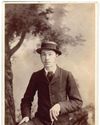
Over the history of photography, picture-taking technology has been through a whole series of transitions. Glass plates were superceded by roll film and then medium format by 35mm, before the advent of digital made analogue photography obsolete. Rangefi nders lost favour to SLRs, and manual operation gave way to ever-increasing automation. The technology may have looked relatively static over any given decade, but viewed across the longer term, it’s been in a constant state of flux and improvement.
The current big transition, of course, is from DSLR to mirrorless. The SLR design was a remarkable solution to the problem of focusing and exposing an image on to a piece of film that had to be kept completely dark until the moment of exposure, while also providing an accurate view finder image with a wide range of lenses. This required the use of a reflex mirror and pentaprism for viewing, along with the addition of autofocus and metering sensors inside the camera body. As a result, DSLRs are complex beasts.
However, with digital sensors, that key requirement of keeping the sensor dark no longer holds. In fact, quite the opposite: the main image sensor can be used to determine focus and exposure inherently more accurately than separate proxy meters. Discarding the mirror box and those extra sensors means cameras can be made smaller, lighter, and quieter in operation. There are lens-design advantages, too. For example, wideangles can be made much smaller.
As a result, it’s no great surprise that the market is moving decisively towards mirrorless. Indeed, over the past two years, we’ve seen a huge shift in new camera releases away from DSLRs. Manufacturers obviously commit their resources to developing the products they think will sell best, and in those terms, the numbers are stark. Of the 27 interchangeable lens cameras announced in 2019, only two were DSLRs, and of 58 new lenses, only nine were for DSLRs.
Esta historia es de la edición December 21, 2019 de Amateur Photographer.
Comience su prueba gratuita de Magzter GOLD de 7 días para acceder a miles de historias premium seleccionadas y a más de 9,000 revistas y periódicos.
Ya eres suscriptor ? Conectar
Esta historia es de la edición December 21, 2019 de Amateur Photographer.
Comience su prueba gratuita de Magzter GOLD de 7 días para acceder a miles de historias premium seleccionadas y a más de 9,000 revistas y periódicos.
Ya eres suscriptor? Conectar

140 years of change
AP has become the world’s oldest surviving consumer photo magazine because we have moved with the times, says Nigel Atherton

Preserving history in platinum
A deep dive into the meticulous art of platinum printing, and the collaboration between the Royal Geographical Society and Salto Ulbeek. Mike Crawford explores how they brought historical photographs to life with enduring beauty and precision

Life in the past lane
What was life like for an amateur photographer in 1884? John Wade takes a trip back in time

Choice cuts
How many trillions of photographs must have been taken in the past 140 years? Amy Davies asked some of our regular contributors for their favourites....a difficult task, to say the least

How good a camera can you buy for just £140?
Three members of the AP team see what they can find for the money

Round Five: The Best of the Rest
The APOY judges choose their favourite images that didn’t make the top ten of our Landscapes category

Amateur Photographer of the Year
Here are the top ten images uploaded to Photocrowd from Round Five, Landscapes, with comments by the AP team and our guest judge

FILM STARS A lifetime of landmarks
Cameras that hit the headlines between then and now. John Wade is your guide

140 years of Amateur Photographer
As AP celebrates its 140th birthday next month, Nigel Atherton looks back at its glorious past

John Wade considers...World War II: Home Front 1940, by A.J O'Brien
Say the word 'Wall's' to those of a certain age and two things spring to mind: sausages and ice cream.